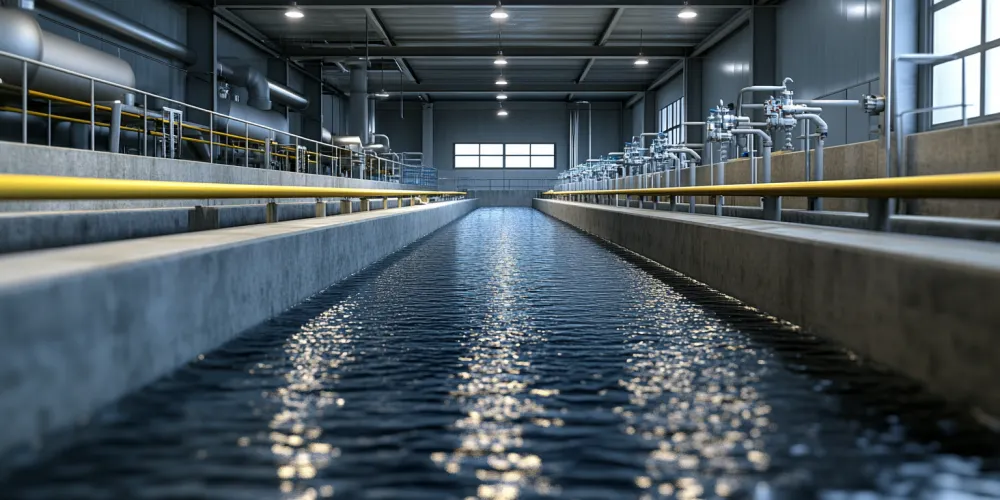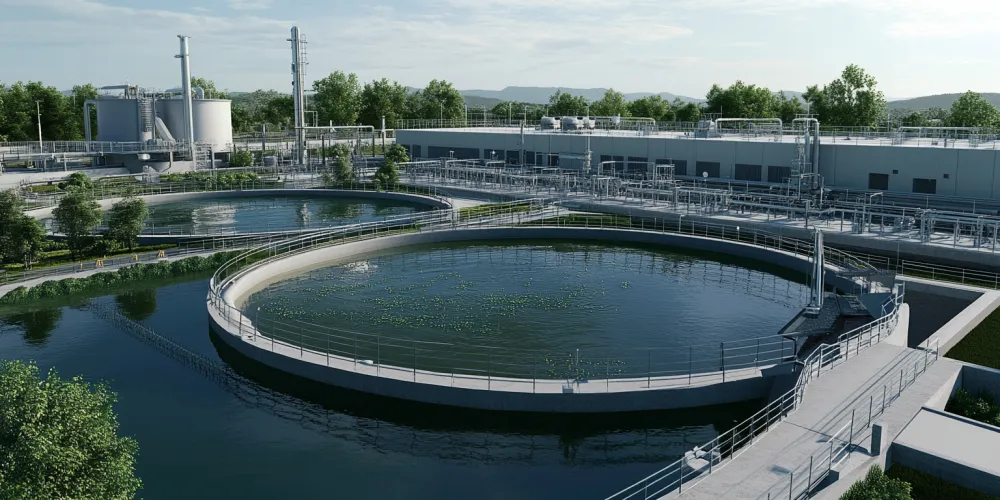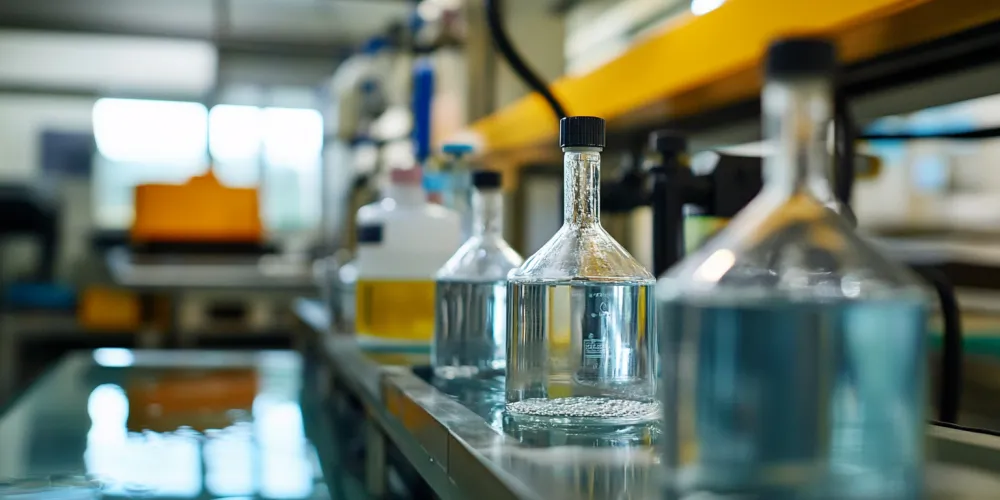High-Efficiency Ferric Chloride Technology Sharing: Significantly Enhancing Water Treatment Efficiency
Last updated on August 12, 2024

Technological Innovation: Leading a New Era in Water Treatment
Innovation is the driving force of progress, and high-efficiency ferric chloride technology is injecting new vitality into the water treatment industry. This technology has significantly improved treatment efficiency and achieved major breakthroughs in environmental friendliness.
Through an in-depth analysis of the shortcomings of traditional ferric chloride (FeCl3), combined with the latest chemical research results, the high-efficiency ferric chloride technology has achieved breakthroughs in the following areas:
- Molecular Structure Optimization: By adjusting the bond length and bond angle of the Fe-Cl bond, the polarity of the molecule has been enhanced; specific ligands have been introduced to improve the coordination ability of iron ions; the optimized molecular structure has greatly improved the solubility and dispersibility of the product in water.
- Additive Formula Innovation: Through a proprietary additive formula, these additives can synergize with ferric chloride (FeCl3) to further enhance treatment effectiveness; the introduction of special additives ensures high efficiency under different pH values and water conditions.
- Production Process Improvement: The adoption of a new continuous flow reaction technology ensures consistency in product quality; the introduction of an intelligent control system enables precise control of the production process; the improved production process not only enhances the application efficiency of the technology but also significantly reduces energy consumption.
Technical Details Analysis: Unveiling the Secrets of High-Efficiency Treatment
True innovation often stems from a relentless pursuit of detail. The high-efficiency ferric chloride technology perfectly embodies this spirit of meticulous refinement.
The key to achieving such significant performance improvements lies in its unique technological innovations. By precisely controlling the molecular structure of ferric chloride (FeCl3), the technology successfully enhances the reactivity and stability of the product. Specifically, the technology has achieved breakthroughs in the following technical aspects:
- Molecular Structure Optimization: By adjusting the bond length and bond angle of the Fe-Cl bond, the polarity of the molecule has been enhanced; specific ligands have been introduced to improve the coordination ability of iron ions; the optimized molecular structure has greatly improved the solubility and dispersibility of the product in water.
- Additive Formula Innovation: Through a proprietary additive formula, these additives can synergize with ferric chloride (FeCl3) to further enhance treatment effectiveness; the introduction of special additives ensures high efficiency under different pH values and water conditions.
- Production Process Improvement: The adoption of a new continuous flow reaction technology ensures consistency in product quality; the introduction of an intelligent control system enables precise control of the production process; the improved production process not only enhances the application efficiency of the technology but also significantly reduces energy consumption.
Future Prospects and Industry Impact
Innovation not only changes the present but also shapes the future. High-efficiency ferric chloride technology is painting a hopeful blueprint for the water treatment industry.
With the successful application of high-efficiency ferric chloride technology, the water treatment industry is entering a new era full of opportunities and challenges. This technology not only represents an important milestone in the industry's move towards higher efficiency and environmental protection but is also expected to have a profound impact on the water treatment industry at multiple levels:
- Acceleration of Technological Innovation: Breakthrough results will inspire a wave of innovation across the industry; customized solutions targeting specific water quality issues are expected to emerge; interdisciplinary collaboration may become a new trend, such as the combination of biotechnology and traditional chemical treatment.
- Industry Upgrade and Structural Adjustment: The promotion of high-efficiency technology will accelerate the phasing out of outdated production capacities; water treatment companies may face pressure to upgrade technology, driving overall industry advancement; upstream and downstream cooperation in the industry chain will become closer, forming a more complete ecosystem.
- Expansion of Environmental Benefits: The improvement in water treatment effects will directly enhance the ecological environment; the reduction in energy consumption and chemical usage will help decrease carbon emissions; stricter emission standards may be promoted, further advancing environmental protection.
- Enhancement of Economic Benefits: Improved treatment efficiency will reduce operational costs for enterprises; the application of new technology may give rise to new business models, such as water treatment service outsourcing; related industries such as equipment manufacturing and testing services may encounter new development opportunities.
- Strengthening International Competitiveness: Advances in water treatment technology are expected to enhance competitiveness in the international market; it may drive the growth of exports of related technologies and products; it will help enhance global influence and discourse power in the water treatment industry.
Conclusion
Water is the source of life, and technological innovation is the key to protecting this precious resource. High-efficiency ferric chloride technology perfectly embodies this spirit of innovation.
High-efficiency ferric chloride technology is not just a technical breakthrough; it represents a new starting point for the water treatment industry. This innovative achievement fully demonstrates the strength and potential in the field of environmental protection technology, and it injects new vitality into the global water resource protection cause.
Looking back at the development process of this technology, we see not only the power of technological innovation but also a deep understanding and active fulfillment of social responsibility. In the context of increasing global climate change and environmental pressure, the significance of continuous innovation to meet challenges has surpassed mere commercial success, contributing to sustainable development for humanity.
Of course, we must also recognize that water resource protection is a complex systemic project that requires the joint efforts of the government, enterprises, and the public. Technological innovation provides us with an important tool, but more importantly, it is about how to effectively apply this tool to actual water environment management. This requires comprehensive policy support, scientific management methods, and an increased environmental awareness across society.
Looking forward, we have reason to believe that with the continuous push of technological innovation and the joint efforts of all sectors of society, global water environment issues will be better resolved. Clear rivers, clean lakes, safe drinking water – these are not only the hopes of our generation but also precious gifts we leave to future generations. Let us all look forward to the day when this beautiful vision becomes a reality, driven by innovative technology.


